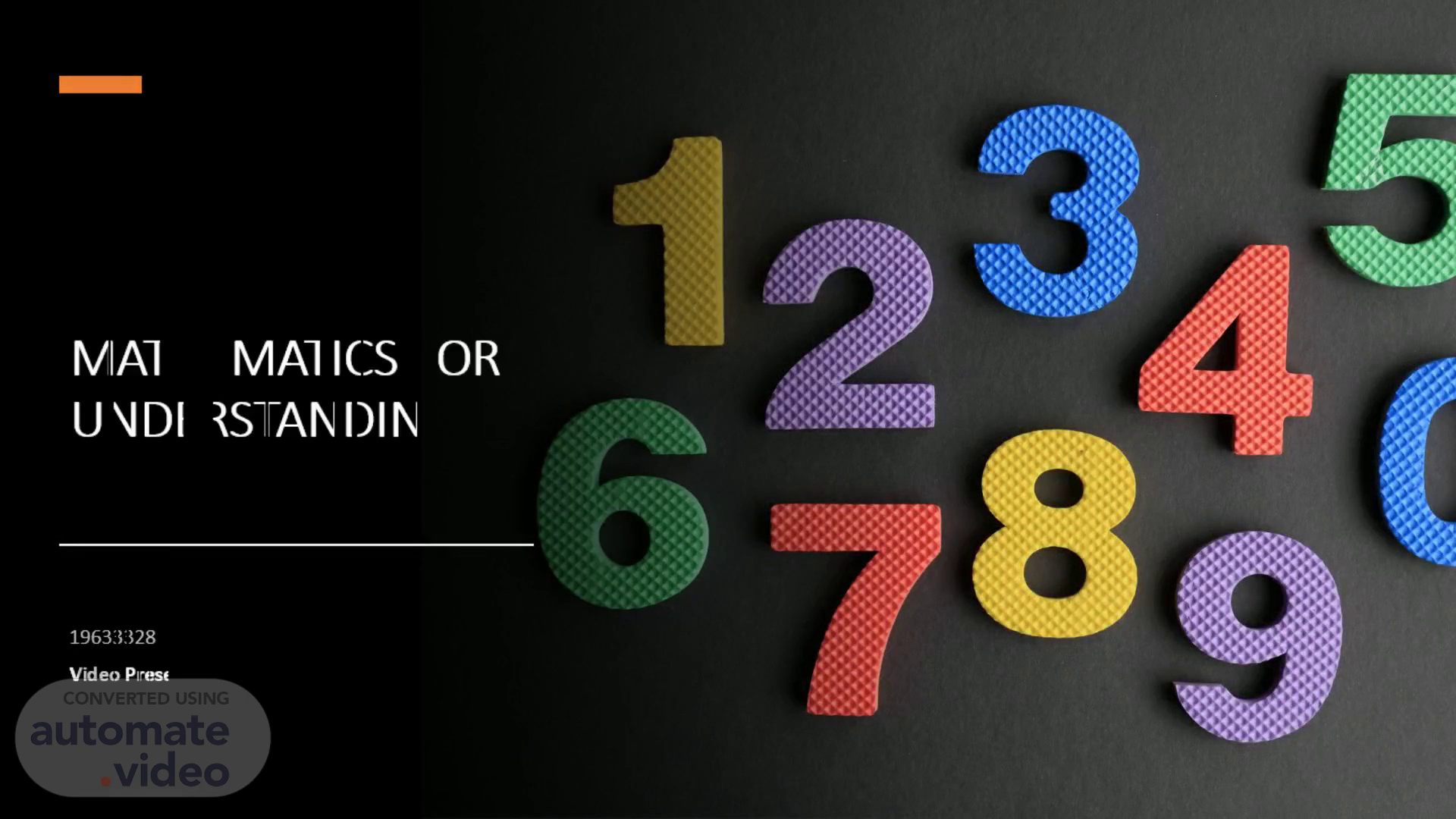
MATHEMATICS FOR UNDERSTANDING
Scene 1 (0s)
Rubberized numbers on the wall. MATHEMATICS FOR UNDERSTANDING.
Scene 2 (20s)
Dice and pins on a board game. The big idea!! Grade 5.
Scene 3 (25s)
Coloured beads on a skewer. Victorian Curriculum & Assessment Authority.
Scene 4 (42s)
The Activity Overview. The statistic & probability activity is designed to aid students in learning fundamental mathematical underlining of real word concepts. Students are given a paper bag with coloured dice and a number of 5 to 10 dice to see what students think. Open ended questions …. “what coloured do you think will come out the most?” Likely-Not likely - Certain - Always Trail-experiment –hands-on.
Scene 5 (1m 59s)
Extending the activity !. Finish the following sentences. Be able to justify your ideas. The probability of an event occurring is... Experimental probability is... As the number of experimental trials increases... Discussion: Find a peer, read their sentences and let them read yours. Repeat this two or three more times. In the space below, write two sentences you heard that impressed you, along with the name of their writers..
Scene 6 (2m 19s)
Capabilities. Personal and Social Capability / Levels 5 and 6 / Social Awareness and Management / Collaboration Identify the characteristics of an effective team and develop descriptions for particular roles including leadership, and describe both their own and their team’s performance when undertaking various roles listing cooperative skills required for effective teamwork, for example turn-taking, respecting different points of view, decision-making skills.
Scene 7 (2m 37s)
Resources needed. Dice Maths books/ workbook? Sticky notes Pens Paper & Coloured paper Fraction chart Extension activity questions.
Scene 8 (2m 38s)
Connection to relevant learning framework & theory!.
Scene 9 (3m 32s)
Addressing Misconceptions. A picture containing different several Description automatically generated.
Scene 10 (3m 44s)
Addressing Misconceptions. Rolling dice? Is this a fair game… What are the chance of … How many combinations is there to the dice.. What are the chances ??.
Scene 11 (4m 21s)
Providing opportunities for differentiation!. The teacher will also, modelled how to record a tally and how it can help students in lower capability groups. Students working on lower capability can be supported this way as I will scaffold students to make predictions and predict effective outcomes. (reference …).
Scene 12 (5m 9s)
Mathematics / Level 4 / Statistics and Probability / Chance Describe possible everyday events and order their chances of occurring Elaborations using lists of events familiar to students and ordering them from ‘least likely’ to ‘most likely’ to occur (VCMSP175) Content description Identify everyday events where one cannot happen if the other happens Elaborations using examples such as weather, which cannot be dry and wet at the same time (VCMSP176) Content description Identify events where the chance of one will not be affected by the occurrence of the other Elaborations explaining that the probability of a new baby being either a boy or a girl does not depend on the sex of the previous baby (VCMSP177) Mathematics / Level 6 / Statistics and Probability / Chance Describe probabilities using fractions, decimals and percentages Elaborations investigating games of chance popular in different cultures (VCMSP232) Content description Conduct chance experiments with both small and large numbers of trials using appropriate digital technologies Elaborations conducting repeated trials of chance experiments, identifying the variation between trials and realising that the results tend to the prediction with larger numbers of trials (VCMSP233) Content description Compare observed frequencies across experiments with expected frequencies Elaborations predicting likely outcomes from a run of chance events and distinguishing these from surprising results (VCMSP234).
Scene 13 (5m 14s)
Assessment. Children outline. Text Description automatically generated with medium confidence.
Scene 14 (6m 7s)
Probability is an important life skill…. A group of yellow figures and a red figure on the other side.
Scene 15 (6m 13s)
References.